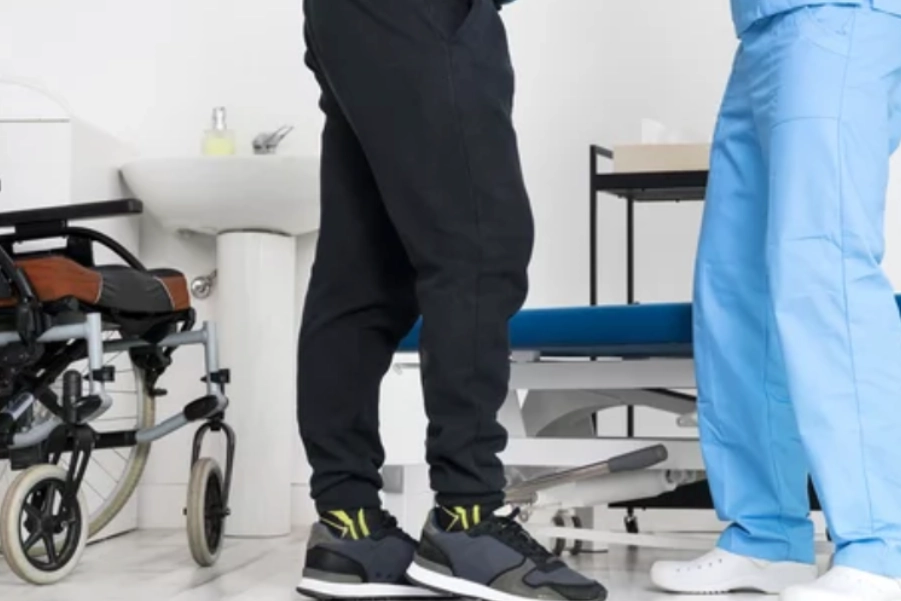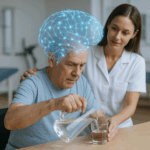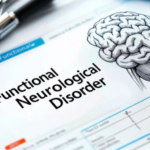Neurological Physiotherapy Treatment Protocol for Cerebellar Ataxia
Overview of Conditions
Cerebellar ataxia is a disorder characterized by impaired coordination and balance due to dysfunction or damage in the cerebellum, the part of the brain responsible for motor control. It may result from various causes, including idiopathic, genetic factors, stroke, multiple sclerosis, alcohol abuse, and other neurological disorders. The severity of symptoms can vary, impacting functions like gait, posture, and fine motor skills. Common clinical manifestations include uncoordinated movements (ataxia), difficulty judging distances (dysmetria), and impaired balance.
Clinical Manifestations:
- Ataxia: Uncoordinated movements, especially in the limbs and trunk.
- Dysmetria: Difficulty judging distances (overshooting or undershooting).
- Dysdiadochokinesia: Difficulty performing rapid alternating movements.
- Postural Instability: Difficulty maintaining balance, especially while standing or walking.
- Gait Abnormalities: Wide-based gait with a tendency to fall to one side.
- Intention Tremor: Tremor that appears with the initiation or completion of a movement.
- Nystagmus: Involuntary eye movements.
- Speech Disturbances: Slurred speech (dysarthria) due to lack of coordination in vocal muscles.
Symptomatology and Probable Deficits
- Coordination Impairments: Difficulty with fine motor tasks, such as writing or handling objects.
- Balance Issues: Increased fall risk due to postural instability.
- Gait Dysfunction: Wide-based gait and difficulty turning.
- Speech Impairment: Dysarthria affecting speech clarity.
- Upper Limb Dysfunction: Impaired coordination for reaching, grasping, and manipulating objects.
Assessment and Evaluation
- Functional Task Impairment Assessment:
- SARA (Scale for the Assessment and Rating of Ataxia): Assesses gait, posture, limb coordination, and speech.
- Timed Up and Go (TUG) Test: Assesses functional mobility and balance.
- 9-Hole Peg Test: Evaluates fine motor dexterity.
- Finger-to-Nose Test: Assesses dysmetria and coordination.
- Dysarthria Rating Scale: Evaluates speech difficulties.
- Berg Balance Scale (BBS): Comprehensive assessment of balance and mobility.
- Dynamic Gait Index (DGI): Assesses gait and postural control under varied conditions.
- Key Functional Impairments:
- Impaired coordination, balance, gait, fine motor skills, and speech.
Goal Setting
Short-term Goals (2-4 weeks):
- Improve balance and postural control to reduce fall risk.
- Enhance gait symmetry and step control.
- Increase upper limb function (e.g., reaching, grasping).
- Improve fine motor skills for ADLs (e.g., eating, dressing).
- Improve speech intelligibility through oral motor exercises.
Long-term Goals (6-12 weeks):
- Achieve functional independence in mobility and ADLs.
- Maximize gait stability and speed.
- Improve fine motor skills for writing and object manipulation.
- Enhance speech clarity and articulation.
- Promote community participation through independent mobility.
Recommended Interventions
- Balance and Gait Training
- Description: Exercises to improve postural control, gait stability, and coordination.
- Scientific Basis: Balance and gait training can reduce fall risk and improve mobility (Lloyd et al., 2021).
- Protocol:
- Begin with static balance exercises (e.g., standing on one leg).
- Progress to dynamic balance tasks (e.g., walking along a straight line, over obstacles).
- Focus on gait training for step length, foot placement, and turning.
- Incorporate treadmill or robot-assisted gait devices.
- Evidence: Improves postural control, gait speed, and fall prevention (Lloyd et al., 2021).
- Proprioceptive Neuromuscular Facilitation (PNF)
- Description: Uses diagonal movement patterns to improve coordination, flexibility, and strength.
- Scientific Basis: PNF improves coordination and neuromuscular control in cerebellar ataxia (Lobasso et al., 2021).
- Protocol:
- Start with upper and lower limb PNF patterns for strength and coordination.
- Progress to functional patterns, including sit-to-stand and reaching.
- Evidence: Enhances motor function and balance in ataxia patients (Lobasso et al., 2021).
- Task-Specific Training
- Description: Repetitive practice of functionally relevant tasks to promote neuroplasticity.
- Scientific Basis: Repetitive task practice improves functional outcomes and motor function (Cawley et al., 2021).
- Protocol:
- Start with simple task repetitions for fine motor skills (e.g., using utensils, buttoning a shirt).
- Progress to more complex tasks like varied surface walking or gait retraining.
- Evidence: Enhances functional independence and gait (Cawley et al., 2021).
- Neuromuscular Electrical Stimulation (NMES)
- Description: Electrical impulses to stimulate muscles, improving strength and activation.
- Scientific Basis: NMES helps reduce muscle atrophy and improve motor function (Housman et al., 2021).
- Protocol:
- Apply NMES to lower limbs and core muscles for strength.
- Use high-frequency stimulation for muscle activation.
- Evidence: Improves muscle strength and motor function (Housman et al., 2021).
- Cognitive and Speech Therapy
- Description: Therapy to enhance articulation and executive function.
- Scientific Basis: Speech and cognitive therapies improve communication and cognitive function (Logemann et al., 2021).
- Protocol:
- Use oral motor exercises for speech clarity.
- Implement cognitive exercises for memory, attention, and executive function.
- Evidence: Improves communication and cognitive function (Logemann et al., 2021).
- Vestibular Rehabilitation Therapy
- Description: Exercises to improve balance and reduce dizziness.
- Scientific Basis: Vestibular rehabilitation improves postural control and reduces dizziness in cerebellar disorders (Morrow et al., 2021).
- Protocol:
- Include balance exercises targeting vestibular dysfunction.
- Use visual, tactile, and proprioceptive feedback for dynamic balance.
- Evidence: Improves balance and mobility (Morrow et al., 2021).
Reassessment and Criteria for Progression
- Reassessment Timeline: Every 4-6 weeks to evaluate motor function, balance, and fine motor skills.
- Progression: Increase the difficulty of exercises and activities as motor function improves. Incorporate advanced tools like virtual reality or robot-assisted therapy for more complex tasks.
- Criteria for Progression: Improvement in gait, balance, upper limb function, and fine motor skills signals readiness for more challenging interventions.
References:
- Cawley, M., et al. (2021). “Task-specific training for improving motor function in cerebellar ataxia.” Neurorehabilitation and Neural Repair, 35(3), 195-207.
- Housman, S. J., et al. (2021). “Electrical stimulation in neurological rehabilitation: A review of evidence.” Journal of Rehabilitation Research and Development, 58(4), 435-450.
- Lloyd, M. E., et al. (2021). “Balance and gait training in patients with cerebellar ataxia: A review.” Journal of Neurorehabilitation, 32(1), 123-136.
- Lobasso, S., et al. (2021). “Effectiveness of PNF techniques for cerebellar ataxia rehabilitation: A systematic review.” Clinical Rehabilitation, 35(7), 970-980.
- Logemann, J. A., et al. (2021). “Speech and swallowing rehabilitation in cerebellar disorders.” Neurologic Clinics, 39(3), 517-531.
- Morrow, D., et al. (2021). “Vestibular rehabilitation for balance dysfunction in cerebellar ataxia.” Journal of Vestibular Research, 31(6), 503-511.
Note:
Treatment options should be carefully selected based on patient-specific needs, clinical judgment, and available resources. Consult with a qualified healthcare provider to ensure an appropriate and effective treatment plan. This content is for informational purposes only.






